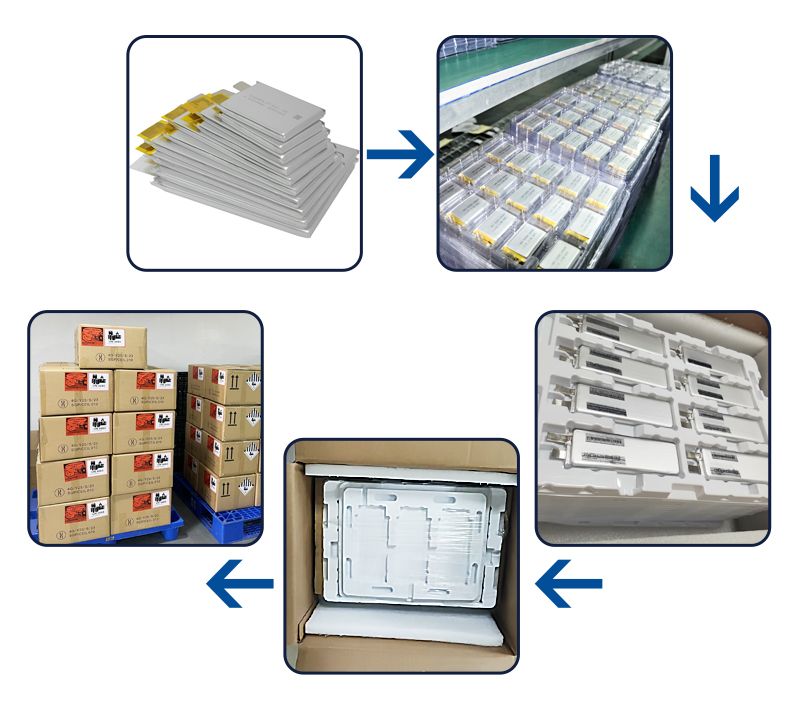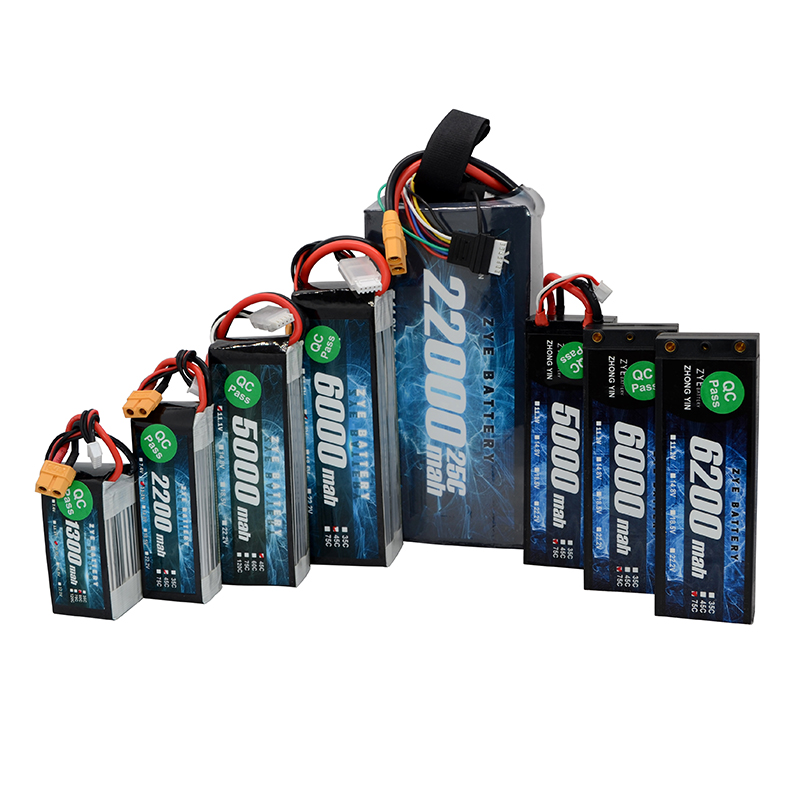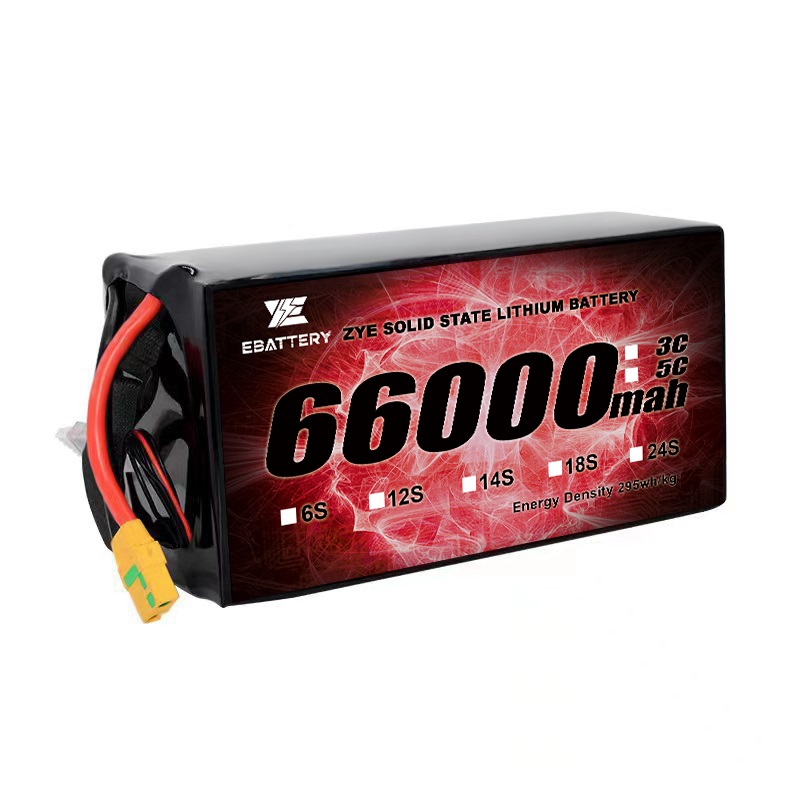What Safety Features Should You Look For in a Drone Battery?
When it comes to flying drones, safety should always be your top priority. One crucial aspect of drone safety is the battery. A high-quality drone battery with robust safety features can make all the difference in ensuring a safe and enjoyable flying experience. In this article, we'll explore the essential safety features you should look for when choosing a battery for your drone.
Are Hard-Case Batteries Safer for Drones?
Hard-case batteries have gained popularity among drone enthusiasts for their enhanced safety features. Let's delve into why these batteries are considered a safer option for your unmanned aerial vehicle.
Impact Resistance and Durability
One of the key benefits of hard-case batteries is their robust impact resistance. The rigid outer casing acts as a shield, offering protection from accidental drops, bumps, and collisions during both flight and transportation. This added layer of durability significantly lowers the risk of battery damage, ensuring a longer operational lifespan. In high-risk environments where drone batteries are frequently subjected to rough handling, hard-case batteries provide peace of mind and enhance the overall safety of your equipment.
Improved Thermal Management
Hard-case batteries often incorporate advanced thermal management systems. These systems help dissipate heat more effectively, reducing the risk of overheating and thermal runaway. By maintaining optimal operating temperatures, hard-case batteries can extend the lifespan of your drone battery and improve overall safety.
Enhanced Protection Against Environmental Factors
Another advantage of hard-case batteries is their sealed design, which provides superior protection against external environmental factors such as moisture, dust, and debris. These elements can pose significant risks to the functionality of sensitive battery components, leading to short circuits or corrosion. The sealed construction of hard-case batteries prevents these issues, ensuring more reliable performance and safety in harsh conditions. Whether exposed to wet, dusty, or otherwise challenging environments, these batteries offer enhanced resilience, ensuring that your drone remains operational under various conditions.

How Do Smart Batteries Prevent Overheating?
Smart batteries have revolutionized drone technology by incorporating advanced safety features designed to prevent overheating and other potential hazards. Let's explore how these intelligent power sources keep your drone flying safely.
Built-in Temperature Sensors
Smart batteries are equipped with sophisticated temperature sensors that continuously monitor the battery's internal temperature. These sensors provide real-time data to the battery management system, allowing it to detect any abnormal temperature fluctuations quickly.
Automatic Shutdown Mechanisms
When the temperature sensors detect that the battery is approaching unsafe levels, smart batteries can automatically initiate a shutdown sequence. This proactive approach prevents the battery from overheating, reducing the risk of thermal runaway and potential fire hazards.
Intelligent Charging Algorithms
Smart batteries utilize advanced charging algorithms that optimize the charging process. These algorithms adjust the charging rate based on the battery's temperature and other factors, ensuring that the battery charges safely and efficiently without overheating.
Why Does It Extend Drone Battery Life?
Extending the life of your drone battery not only saves you money but also enhances safety by reducing the frequency of battery replacements. Let's examine why proper battery care and maintenance can significantly extend its lifespan.
Proper Storage Practices
To extend the life of your drone battery, proper storage is essential. When the battery is not in use, it should be stored in a cool, dry environment at room temperature. Avoid exposing it to extreme temperatures or placing it in direct sunlight, as both can cause the battery to degrade over time, diminishing its performance and safety features. Ensuring that the battery is stored in an ideal location prevents unnecessary wear and helps maintain its optimal functionality when you need it next.
Regular Maintenance and Inspection
Regular maintenance and inspection are vital for the safe operation of your drone battery. Periodically check the battery for signs of physical damage, such as swelling, cracks, or corrosion around the terminals. Any of these issues can indicate potential risks, and the battery should be replaced immediately if abnormalities are detected. Performing these checks ensures that any problems are identified early, preventing accidents or malfunctions during flight and helping to maintain the safety and performance of your drone.
Optimal Charging Habits
Adopting proper charging habits can significantly extend your drone battery's lifespan. Avoid overcharging or completely draining the battery, as both practices can reduce its overall capacity and potentially compromise safety. Instead, aim to keep the battery charge level between 20% and 80% for optimal performance and longevity.
Balancing Cells in Multi-Cell Batteries
For drones that use multi-cell batteries, regular cell balancing is essential for maintaining optimal performance and safety. Cell balancing ensures that all cells within the battery pack maintain an equal voltage, preventing overcharging or over-discharging of individual cells.
Avoiding Extreme Temperatures During Operation
Operating your drone in extreme temperatures can significantly impact battery life and safety. Avoid flying in very hot or cold conditions, as these temperatures can strain the battery and potentially trigger safety mechanisms. If you must fly in challenging weather, consider using batteries specifically designed for extreme temperature operation.
Proper Discharge Rates
Adhering to the recommended discharge rates for your drone battery can help extend its lifespan and maintain safety. Avoid pushing the battery beyond its specified limits, as this can lead to increased wear and potential safety risks. Always follow the manufacturer's guidelines for optimal discharge rates and flight times.
In conclusion, selecting a drone battery with robust safety features is crucial for ensuring a safe and enjoyable flying experience. By opting for hard-case batteries, utilizing smart battery technology, and implementing proper care and maintenance practices, you can significantly enhance the safety and longevity of your drone's power source.
If you're looking for high-quality, safe drone batteries that incorporate the latest safety features, look no further than Ebattery. Our cutting-edge battery solutions are designed to provide optimal performance while prioritizing safety. Don't compromise on your drone's power source – choose Ebattery for peace of mind during every flight. For more information or to place an order, please contact us at cathy@zyepower.com.
References
1. Johnson, M. (2022). "The Evolution of Drone Battery Technology: Safety First". Journal of Unmanned Aerial Systems, 15(3), 78-92.
2. Smith, A. & Brown, T. (2023). "Comparative Analysis of Hard-Case vs. Soft-Case Drone Batteries". International Conference on Drone Safety and Performance, 112-125.
3. Lee, S. et al. (2021). "Smart Battery Management Systems for Enhanced Drone Safety". IEEE Transactions on Aerospace Electronic Systems, 57(2), 1023-1037.
4. Garcia, R. (2023). "Maximizing Drone Battery Lifespan: Best Practices and Techniques". Drone Technology Review, 8(4), 201-215.
5. Wilson, K. & Taylor, J. (2022). "The Impact of Environmental Factors on Drone Battery Safety and Performance". Journal of Aerial Robotics, 19(1), 45-59.
























































